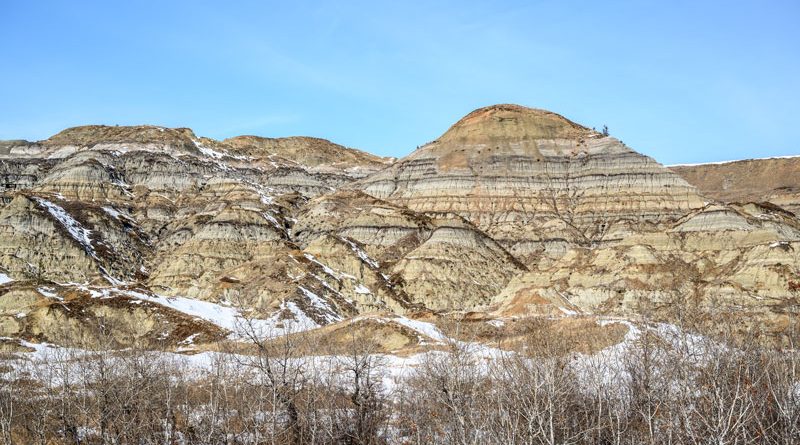Canadian Badlands considers restructuring
By Sean Feagan, Local Journalism Initiative Reporter

Sean Feagan Photo
Canadian Badlands, a shareholder-based organization promoting tourism in Alberta’s east, is worth keeping but change is needed, according to the findings of a third-party review.
The Canadian Badlands Tourism Association, composed of over 50 member municipalities, was founded in 2006 to promote tourism throughout a unique region in south central and southeastern Alberta featuring dinosaur digs, hoodoo landscapes and other attractions. Each year, Canadian Badlands publishes an experience guide, summarizing the sights and businesses throughout the area.
But the organization has faced challenges as of late.
The COVID-19 pandemic has devastated the tourism industry throughout Alberta, including the Canadian Badlands. Shutdowns and other restrictions have decreased international travel, attendance to parks and historic sites, employment and accommodation occupancy from 2019, according to the 2020 Alberta Tourism Market Monitor.
But the pandemic also highlighted issues within the organization, with several stakeholders thinking it had lost its vision, said Donna Biggar, Canadian Badlands president and Wheatland County councillor.
“Some thought it got too big, and some thought that we were looking after Drumheller but not the south,” she said. “We are losing shareholders because of some of these questions.”
These include some of its largest members, including the City of Lethbridge, leaving in February 2020 and the City of Medicine Hat leaving in December 2020. Additionally, the provincial government has been cutting tourism grant funding, explained Biggar.
The organization removed its executive director last summer, with the position now unfilled.
In response to these issues, Twenty31 Consulting was hired to perform a three-phase review of the organization. The first two phases of the review, now complete, focused on the shareholder views on the organization’s viability, explained Biggar.
The review concluded that while developing tourism in the area remains a compelling idea, there was almost universal consensus that the organization is not sustainable in its current form. It is worth saving, but major organizational changes are needed, the review concluded.
“We need the badlands,” said Biggar. “It’s an iconic name, internationally, and a lot of these small towns and villages don’t have any way of having their own tourism association, so they have no way of advertising on their own.”
There was no consensus on what should be done next, however, including different paths on its role, mandate, governance and funding.
Canadian Badlands may change to only focusing on marketing or start providing an online system that municipalities could pay into to advertise local events or attractions, said Biggar. Alternatively, there could be tourism operators that could form a board, rather than municipal leaders.
“There’s actually quite a few choices,” said Biggar. “It’s not going away; we just don’t know the best way to run it just yet.”
The next phase of the study is now underway, which is focusing on the organization’s partners, including the government of Alberta, Travel Alberta and other tourism associations. It is expected to be completed by the end of February.
Whatever is decided, alongside the Canadian Rockies, the badlands are a tourism asset for local municipalities and the province alike, said Biggar. “We’re fortunate to have two totally different regions that look so different that you can experience in one trip.”
